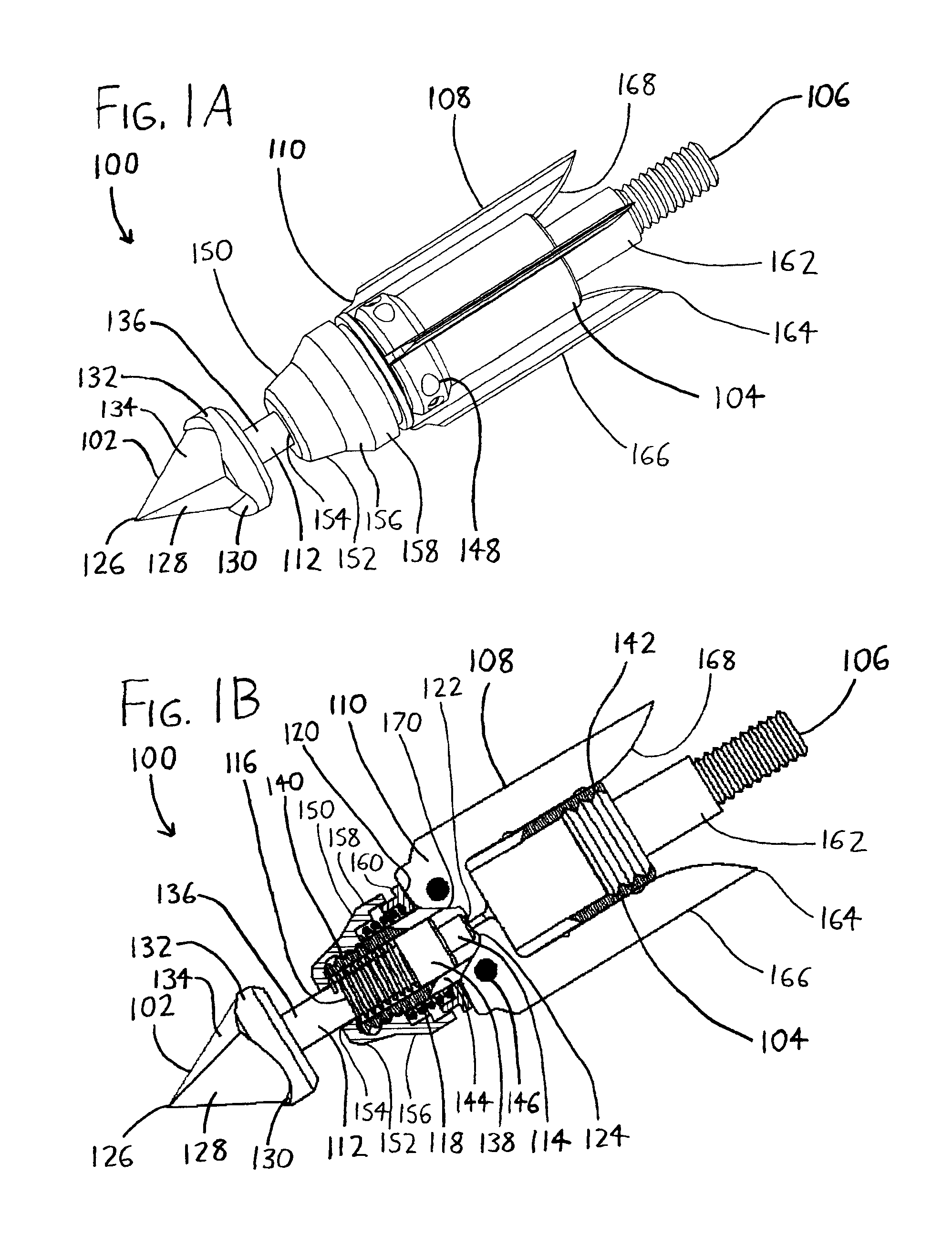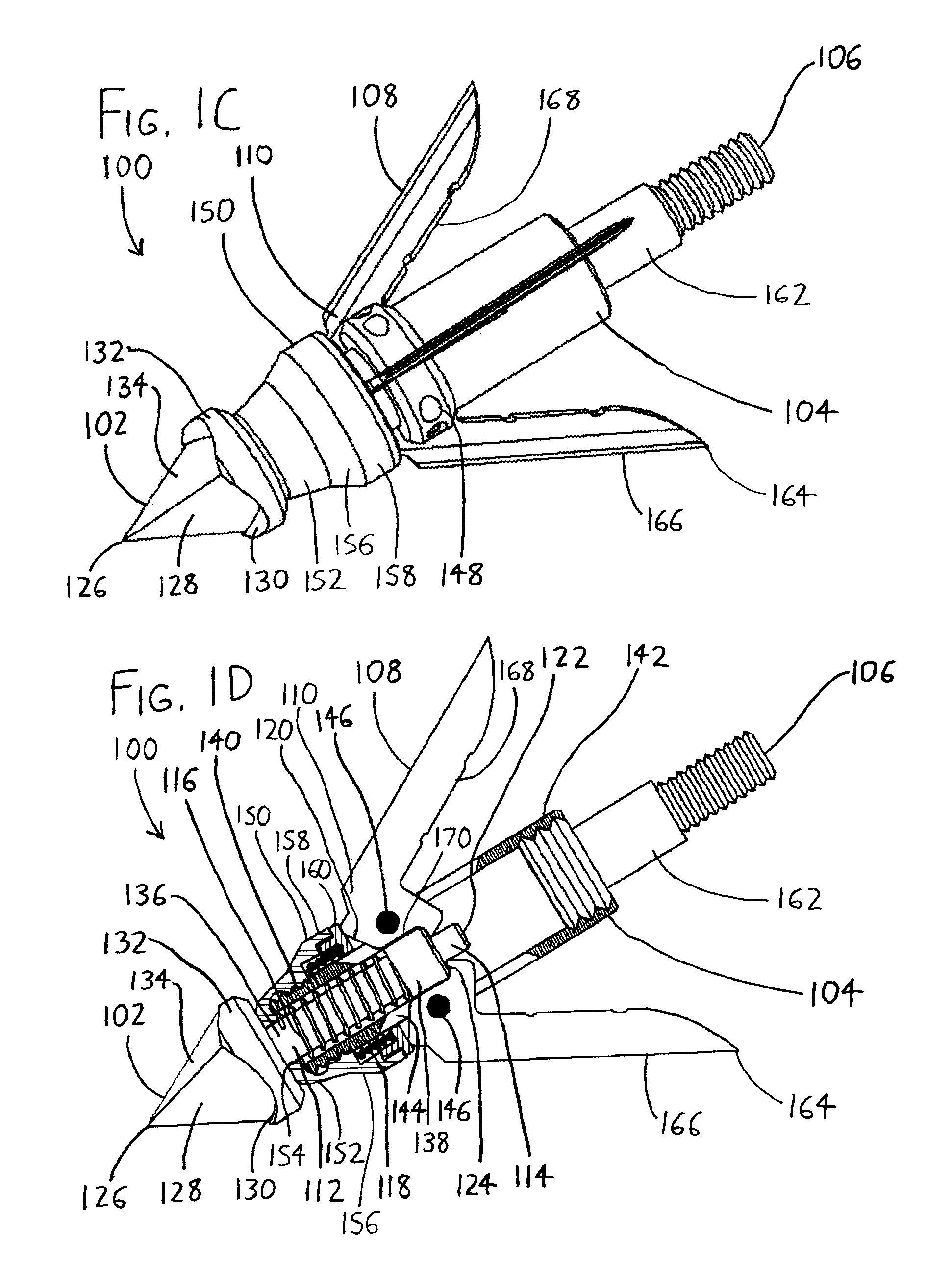Arrowhead with unfolding blades
a technology of arrowheads and blades, applied in the field of arrowheads, can solve the problems of unable to fend for itself, prolonged suffering, and relative rapid death via blood loss, and achieve the effect of expanding the size of the entry wound and maximizing the debilitating trauma
- Summary
- Abstract
- Description
- Claims
- Application Information
AI Technical Summary
Benefits of technology
Problems solved by technology
Method used
Image
Examples
Embodiment Construction
[0028]To review the arrowhead 100 of FIGS. 1A-1D in greater detail, the tip 102 is preferably made removable from the actuating member 112, as by threading or force-fitting the forward end of the actuating member 112 into a bore (not shown) defined within the tip base 132 along its central axis. This allows the tip 102 to be removed and replaced with other tips if desired, e.g., the tip 202 of FIGS. 2A-2B (discussed below), a conventional conical tip, or other tips. Depending on the configuration and weight (and thus the inertia) of the chosen tip, as well as the force of the bow used to launch the arrow, the springs 116 and 118 may need to be chosen to require greater rearward force on the tip before the blades 108 open. Otherwise, the inertia of the tip may cause inadvertent blade opening when the arrow is launched and the shaft of the arrow is thrust forwardly, with the inertia of the tip effectively generating a rearward force on the tip with respect to the body 104.
[0029]Referr...
PUM
 Login to View More
Login to View More Abstract
Description
Claims
Application Information
 Login to View More
Login to View More - R&D
- Intellectual Property
- Life Sciences
- Materials
- Tech Scout
- Unparalleled Data Quality
- Higher Quality Content
- 60% Fewer Hallucinations
Browse by: Latest US Patents, China's latest patents, Technical Efficacy Thesaurus, Application Domain, Technology Topic, Popular Technical Reports.
© 2025 PatSnap. All rights reserved.Legal|Privacy policy|Modern Slavery Act Transparency Statement|Sitemap|About US| Contact US: help@patsnap.com



